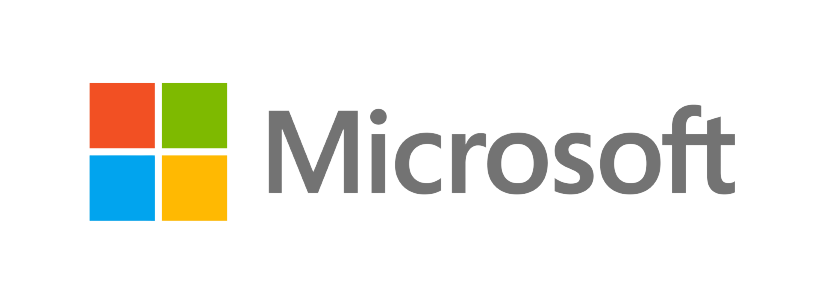Marketing has become such a catch-all term that it sometimes seems that marketing is everything.
In actuality, it fulfills seven primary core functions of business, although it does so in a range of different ways, across the whole of the product journey. Its effect is wide-reaching, involving everyone in a company from the business owner, marketing teams, research and development teams, and customer support.
A well-designed marketing push can launch a new product or service into the stratosphere, or revitalize a dying brand.
Marketing has played a vital role in society for centuries, but today it is highly technology-driven. As Candice Georgiadis writes in Forbes magazine, “Traditional marketing still has its place, but digital marketing and technology in marketing altered everything. Today, it is your website, application, or ecommerce store in front of the world representing your business and its values.”
Empowered by new technologies, these seven functions can be thought of as individual work strands that equally contribute to the success of a marketing campaign. Let’s look in more detail at the seven functions that marketing fulfills in the 21st century.
What are the seven functions of marketing?
The 7 functions of marketing include:
- Product development and manegement: Researching what products to develop and sell
- Marketing financing: Constructing a marketing and sales budget
- Marketing intel (information management): Using customer data to drive a campaign
- Product pricing: Formulating the right price strategy.
- Sales: Selling the products efficiently and profitably.
- Promotion: Getting the word out about your product line.
- Distribution: Delivering the product efficiently in all territories.
While some of these marketing functions might not seem very marketing-specific (such as finance or distribution), they all feed into an effective campaign.
Let’s go into more detail about each component.
1. Product development and management
Developing the right product line requires market research — getting to know market trends, industry trends, gaps in the market, and what fulfills customer needs. It entails talking to potential customers and shaping your offering accordingly.
And sometimes, contrary to the above, it’s impossible to know in advance what consumers will want. Steve Jobs famously believed that sometimes you have to show people what they want, particularly when it’s a uniquely innovative product. He’s often quoted as saying “Our job is to figure out what they're going to want before they do.”
But Lyft’s Katie Dill, taking to Business Insider, believes his statements are often misunderstood. She says, "I agree with the sentiment that we can't just ask for what customers want; they don't always know how to articulate it. But I am a firm believer in the power of understanding our community. I'm a firm believer in the power of user research and qualitative insight gathering."
While you may have an instinctive understanding of what the market wants, by putting early prototypes in front of your target audience, you’ll be able to finesse and perfect them. In doing so, you’ll also begin to see how this audience could be reached with targeted marketing campaigns.
2. Marketing financing
You’ll have to devise a budget for marketing your product line, which will require you to decide what approaches you’d like to take and how to allocate resources effectively. Depending on the target market and product line, your marketing campaign might include:
- Legacy media ad placement — cinema, television, newspapers, and magazines.
- Online ad placement — banner and sidebar ads on websites, video ads on YouTube
- Social media advertising — Facebook, Instagram, TikTok, Twitter, LinkedIn.
- Outdoor advertising — billboards and street-level campaigns.
- Influencer campaigns — building a social media following.
- Sponsorship — of events, individuals, podcasts, or social justice campaigns.
Each of these avenues requires its own budget and you may decide to prioritize one or two modes over others, depending on your target market and the product being marketed. A key question here is how to set targets for your ROI for each type of advertising.
Remember to budget for prototyping, product testing, competitor intelligence, data analytics, additional market research and A/B testing, among other ancillary costs.
3. Marketing information management (intel)
There are many companies offering sophisticated AI-driven analysis of demographics and buyer behavior. These can prove very rewarding, generating insights to drive more effective marketing campaigns towards your target customers. Whether it is directed at the performance of your sales campaigns, your website, or competitor sites, the information you can gather will prove hugely influential for consumer needs.
Jonathan Laberge of Forbes magazine expresses it concisely: “Marketing intelligence is all of the data you can gather that is linked to your marketing efforts or that can help you take action with your marketing strategy.”
Business intelligence, competitor intelligence and engagement analysis can all feed into your marketing strategy, and some systems even allow for campaigns to be automatically tweaked and changed according to prevailing trends. A/B testing of campaigns, and the engagement data you can derive from these tests, can help you hone your strategy.
In order to decide what type of intelligence you need to source, it’s vital to decide what you want your marketing campaign to achieve. Is your primary aim to improve brand awareness, launch a new product, improve customer engagement, or increase sales (to name but four outcomes).
Marketing intelligence is probably the fastest-growing sector in 21st century marketing, and with good reason — it can convey significant competitive advantage.
4. Product pricing
This is no longer a simple matter, being just as influenced by developments in technology as anything else in marketing. Many big retailers, for instance, now use dynamic pricing, powered by AI, to analyze what competitors are doing in terms of prices, levels of supply and demand and customer sentiment before tweaking prices, often hourly.
In part this is driven by the increasing tendency and ability of consumers to shop around. As one influential ecommerce paper by P.K. Kannan and Praveen K. Kopalle states, “Marketers are resorting to dynamic prices even for goods and services sold at posted prices, spurred partly by the lower menu cost of changing prices on the Internet and partly as a response to consumer use of price-comparison bots.”
There are even consultancies offering price setting as a specialism, suggesting that it’s as much an arcane art as a science. Certainly, it’s hard to predict what prices will attract the best ROI, particularly when there are supply chain issues, legislative changes, environmental and political concerns. Perhaps it is a good idea to get a little technological help with this basic function.
5. Sales
Once you’ve defined your pricing strategy, it’s time to focus on what outlets will carry your product offering. Will you sell through brick-and-mortar premises, online stores, or via a small army of telesales or in-person salespeople?
Your primary sales methodology will depend largely on your product or service, and who you are hoping to sell to. B2B products often rely significantly on your website for direct sales, as well as the personal contacts of sales professionals. Consumer products may do better on mass-market sales portals like Amazon or Alibaba.
Whole books have been written on the art of securing leads, qualifying them (separating promising ones from no-hopers) and converting them to sales. You’ll want to know about the iconic sales funnel model and how multi-touch campaigns can contribute to conversions.
Says top sales platform Salesforce in their blog: “A well-defined sales funnel helps you understand your prospects’ knowledge of and interest in your products or services at various points of the buying journey.” The funnel allows you to prioritize which prospects to focus on and which approaches to use.
Sales is about building relationships with customers, whether they are online shoppers, in-store visitors, or procurement managers. To optimize this process, you’ll use both technological means and personal insight. Marketing and sales have a symbiotic relationship — marketing drives sales and sales data informs future marketing.
6. Promotion
This function is probably the core of what the layperson considers “marketing” — the public messages which drive customers to your store, site, or sales professional. It is the sum total of the various ways in which you convey your product offering to the public.
You’ll have budgeted to promote your products though a range of means (see marketing financing) and here’s where you get to enjoy the creativity of bringing those campaigns to life. Whether its PR (public relations), TV ads, content marketing, influencer social media posts, event sponsorship, email marketing, or billboards on the freeway, there have never been more ways to reach an audience.
Specialist media buying, design and advertising agencies exist which will become your partners in the fine art of promotion, whether it’s devising a perfect landing page, writing a script for telesales staff, filming a commercial to run on ESPN during the big game or creating an interactive ad to go viral on Instagram feeds, there are plenty of award-winning agencies to help you shape the perfect campaign.
There are also cut-price ways for startups and disruptors to muscle into the frame too, with grassroots influencer campaigns, street advertising, competitions, discount codes and more.
7. Distribution
Of course, none of the above matters if you don’t have a good distribution channel through which to distribute your product. Your customer service teams will prove hugely helpful in clarifying how customers want to shop for your products, and how they expect them delivered.
Delivery orchestration, like everything else, has been revolutionized in recent years by technology. Fulfillment trends have been accelerated by the pandemic, with a major shift towards curbside pickup (or BOPIS: buy online pickup in-store), as well as same day deliveries for everything from groceries to gifts.
There are a host of modes of fulfillment to consider, and a greater range of companies vying to provide an optimized and data-driven service. Meanwhile, there are political, economic, and environmental factors to consider when deciding upon a suitable model for delivery.
Marketing is more than advertising and sales

As we’ve seen, there’s a lot more to marketing than simply devising a campaign to get your product before the right audience. Marketing is a process which reaches back to the moment of inception of your product line, and forward to the delivery of your finished products.
Marketing is a lens through which to view the whole entrepreneurial process, and a marketing-driven approach to commerce helps you achieve relevance and visibility in a crowded marketplace.
Let’s leave the last word on good marketing to one of its major proponents, Peter Drucker:
“Marketing is not a function, it is the whole business seen from the customer’s point of view.”
Get the weekly newsletter keeping +30,000 marketers in the loop.















